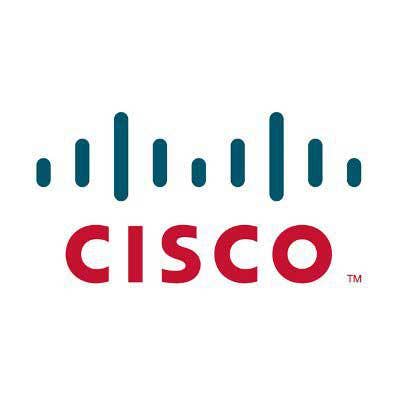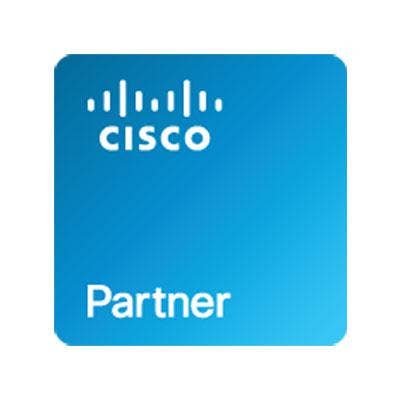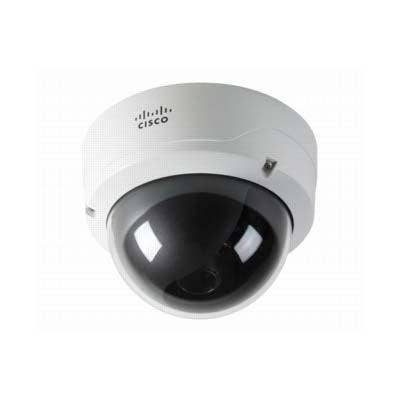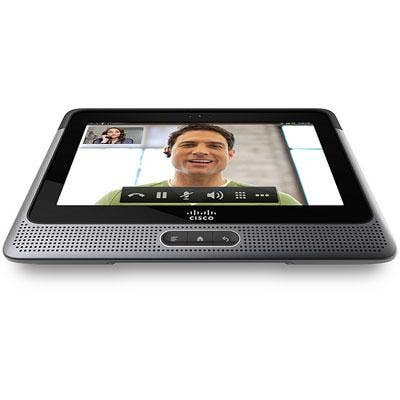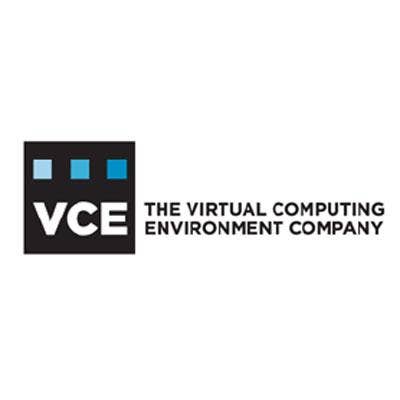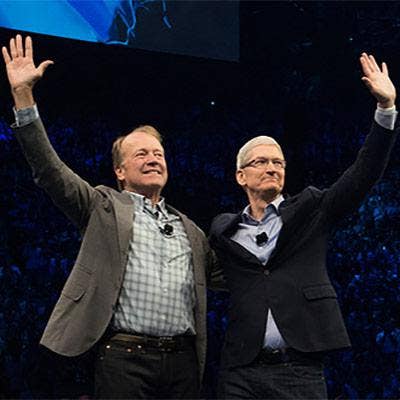
Real Exam Questions and Answers as experienced in Test Center
500-490 Braindumps with 100% Guaranteed Actual Questions | https:alphernet.com.au
500-490 questions - Designing Cisco Enterprise Networks Updated: 2024 | ||||||||
| Pass4sure 500-490 real question bank | ||||||||
 |
||||||||
|
||||||||
|
Exam Code: 500-490 Designing Cisco Enterprise Networks questions January 2024 by Killexams.com team | ||||||||
500-490 Designing Cisco Enterprise Networks Objectives After taking this course, you should be able to: Design Enhanced Interior Gateway Routing Protocol (EIGRP) internal routing for the enterprise network Design Open Shortest Path First (OSPF) internal routing for the enterprise network Design Intermediate System to Intermediate System (IS-IS) internal routing for the enterprise network Design a network based on customer requirements Design Border Gateway Protocol (BGP) routing for the enterprise network Describe the different types and uses of Multiprotocol BGP (MP-BGP) address families Describe BGP load sharing Design a BGP network based on customer requirements Decide where the L2/L3 boundary will be in your Campus network and make design decisions Describe Layer 2 design considerations for Enterprise Campus networks Design a LAN network based on customer requirements Describe Layer 3 design considerations in an Enterprise Campus network Examine Cisco SD-Access fundamental concepts Describe Cisco SD-Access Fabric Design Design an Software-Defined Access (SD-Access) Campus Fabric based on customer requirements Design service provider-managed VPNs Design enterprise-managed VPNs Design a resilient WAN Design a resilient WAN network based on customer requirements Examine the Cisco SD-WAN architecture Describe Cisco SD-WAN deployment options Design Cisco SD-WAN redundancy Explain the basic principles of QoS Design Quality of Service (QoS) for the WAN Design QoS for enterprise network based on customer requirements Explain the basic principles of multicast Designing rendezvous point distribution solutions Describe high-level considerations when doing IP addressing design Create an IPv6 addressing plan Plan an IPv6 deployment in an existing enterprise IPv4 network Describe the challenges that you might encounter when transitioning to IPv6 Design an IPv6 addressing plan based on customer requirements Describe Network APIs and protocols Describe Yet Another Next Generation (YANG), Network Configuration Protocol (NETCONF), and Representational State Transfer Configuration Protocol (RESTCONF) Prerequisites Before taking this course, you should have earned CCNA® certification or be familiar with: Basic network fundamentals and building simple LANs Basic IP addressing and subnets Routing and switching fundamentals Basic wireless networking concepts and terminology Outline Designing EIGRP Routing Designing OSPF Routing Designing IS-IS Routing Designing BGP Routing and Redundancy Understanding BGP Address Families Designing the Enterprise Campus LAN Designing the Layer 2 Campus Designing the Layer 3 Campus Discovering the Cisco SD-Access Architecture Exploring Cisco SD-Access Fabric Design Designing Service Provider-Managed VPNs Designing Enterprise-Managed VPNs Designing WAN Resiliency Examining Cisco SD-WAN Architectures Cisco SD-WAN Deployment Design Considerations Designing Cisco SD-WAN Routing and High Availability Understanding QoS Designing LAN and WAN QoS Exploring Multicast with Protocol-Independent Multicast-Sparse Mode Designing Rendezvous Point Distribution Solutions Designing an IPv4 Address Plan Exploring IPv6 Deploying IPv6 Introducing Network APIs and Protocols Exploring YANG, NETCONF, RESTCONF, and Model-Driven Telemetry Lab outline Designing Enterprise Connectivity Designing an Enterprise Network with BGP Internet Connectivity Designing an Enterprise Campus LAN Designing Resilient Enterprise WAN Designing QoS in an Enterprise Network Designing an Enterprise IPv6 Network Designing Cisco Enterprise Networks (ENSLD 500-490) is a 90-minute exam associated with the CCNP Enterprise Certification. This exam certifies a candidate's knowledge of enterprise design including advanced addressing and routing solutions, advanced enterprise campus networks, WAN, security services, network services, and SDA. The course, Designing Cisco Enterprise Networks, helps candidates to prepare for this exam. The following syllabus are general guidelines for the content likely to be included on the exam. However, other related syllabus may also appear on any specific delivery of the exam. To better reflect the contents of the exam and for clarity purposes, the guidelines below may change at any time without notice. 25% 1.0 Advanced Addressing and Routing Solutions 1.1 Create structured addressing plans for IPv4 and IPv6 1.2 Create stable, secure, and scalable routing designs for IS-IS 1.3 Create stable, secure, and scalable routing designs for EIGRP 1.4 Create stable, secure, and scalable routing designs for OSPF 1.5 Create stable, secure, and scalable routing designs for BGP 1.5.a Address families 1.5.b Basic route filtering 1.5.c Attributes for path preference 1.5.d Route reflectors 1.5.e Load sharing 1.6 Determine IPv6 migration strategies 1.6.a Overlay (tunneling) 1.6.b Native (dual-stacking) 1.6.c Boundaries (IPv4/IPv6 translations) 25% 2.0 Advanced Enterprise Campus Networks 2.1 Design campus networks for high availability 2.1.a First Hop Redundancy Protocols 2.1.b Platform abstraction techniques 2.1.c Graceful restart 2.1.d BFD 2.2 Design campus Layer 2 infrastructures 2.2.a STP scalability 2.2.b Fast convergence 2.2.c Loop-free technologies 2.2.d PoE and WoL 2.3 Design multicampus Layer 3 infrastructures 2.3.a Convergence 2.3.b Load sharing 2.3.c Route summarization 2.3.d Route filtering 2.3.e VRFs 2.3.f Optimal topologies 2.3.g Redistribution 2.4 Describe SD-Access Architecture (underlay, overlay, control and data plane, automation, wireless, and security) 2.5 Describe SD-Access fabric design considerations for wired and wireless access (overlay, fabric design, control plan design, border design, segmentation, virtual networks, scalability, over the top and fabric for wireless, multicast) 20% 3.0 WAN for Enterprise Networks 3.1 Compare WAN connectivity options 3.1.a Layer 2 VPN 3.1.b MPLS Layer 3 VPN 3.1.c Metro Ethernet 3.1.d DWDM 3.1.e 4G/5G 3.1.f SD-WAN customer edge 3.2 Design site-to-site VPN 3.2.a Dynamic Multipoint VPN (DMVPN) 3.2.b Layer 2 VPN 3.2.c MPLS Layer 3 VPN 3.2.d IPsec 3.2.e Generic Routing Encapsulation (GRE) 3.2.f Group Encrypted Transport VPN (GET VPN) 3.3 Design high availability for enterprise WAN 3.3.a Single-homed 3.3.b Multihomed 3.3.c Backup connectivity 3.3.d Failover 3.4 Describe Cisco SD-WAN Architecture (orchestration plane, management plane, control plane, data plane, on-boarding and provisioning, security) 3.5 Describe Cisco SD-WAN design considerations (control plane design, overlay design, LAN design, high availability, redundancy, scalability, security design, QoS and multicast over SD-WAN fabric) 20% 4.0 Network Services 4.1 Select appropriate QoS strategies to meet customer requirements (DiffServ, IntServ) 4.2 Design end-to-end QoS policies 4.2.a Classification and marking 4.2.b Shaping 4.2.c Policing 4.2.d Queuing 4.3 Design network management techniques 4.3.a In-band vs. out-of-band 4.3.b Segmented management networks 4.3.c Prioritizing network management traffic 4.4 Describe multicast routing concepts (source trees, shared trees, RPF, rendezvous points) 4.5 Design multicast services (SSM, PIM bidirectional, MSDP) 10% 5.0 Automation 5.1 Choose the correct YANG data model set based on requirements 5.2 Differentiate between IETF, Openconfig, and Cisco native YANG models 5.3 Differentiate between NETCONF and RESTCONF 5.4 Describe the impact of model-driven telemetry on the network 5.4.a Periodic publication 5.4.b On-change publication 5.5 Compare dial-in and dial-out approaches to model-driven telemetry | ||||||||
| Designing Cisco Enterprise Networks Cisco Enterprise questions | ||||||||
Other Cisco exams010-151 Cisco Certified Technician (CCT) for Data Center500-275 Securing Cisco Networks with Sourcefire FireAMP Endpoints CICSP Cisco IronPort Certified Security Professional 600-455 Deploying Cisco Unified Contact Center Enterprise (DUCCE) 500-210 SP Optical Technology Field Engineer Representative 500-052 Deploying Cisco Unified Contact Center Express (UCCXD) 500-651 Security Architecture for Systems Engineer (SASE) 500-701 Cisco Video Infrastructure Design (VID) 500-301 Cisco Cloud Collaboration Solutions 500-551 Cisco Networking: On-Premise and Cloud Solutions 700-020 Cisco Video Sales Essentials 500-710 Cisco Video Infrastructure Implementation 700-105 Cisco Midsize Collaboration Solutions for Account Managers 500-325 Cisco Collaboration Servers and Appliances 500-490 Designing Cisco Enterprise Networks 500-470 Cisco Enterprise Networks SDA, SDWAN and ISE exam for System Engineers 500-901 Cisco Data Center Unified Computing Infrastructure Design 500-230 Cisco Service Provider Routing Field Engineer 700-150 Introduction to Cisco Sales 700-651 Cisco Collaboration Architecture Sales Essentials 700-751 Cisco SMB Product and Positioning Technical Overview (SMBSE) 300-410 Implementing Cisco Enterprise Advanced Routing and Services (ENARSI) 300-415 Implementing Cisco SD-WAN Solutions (ENSDWI) 300-420 Designing Cisco Enterprise Networks (ENSLD) 300-425 Designing Cisco Enterprise Wireless Networks (ENWLSD) 300-430 Implementing Cisco Enterprise Wireless Networks (ENWLSI) 2023 300-435 Automating Cisco Enterprise Solutions (ENAUTO) 300-510 Implementing Cisco Service Provider Advanced Routing Solutions (SPRI) 300-610 Designing Cisco Data Center Infrastructure (DCID) 300-615 Troubleshooting Cisco Data Center Infrastructure (DCIT) 300-620 Implementing Cisco Application Centric Infrastructure (DCACI) 300-635 Automating Cisco Data Center Solutions (DCAUTO) 300-810 Implementing Cisco Collaboration Applications (CLICA) 300-815 Implementing Cisco Advanced Call Control and Mobility Services (CLACCM) - CCNP 300-910 Implementing DevOps Solutions and Practices using Cisco Platforms (DEVOPS) 300-920 Developing Applications for Cisco Webex and Webex Devices (DEVWBX) 350-401 Implementing Cisco Enterprise Network Core Technologies (ENCOR) 350-501 Implementing and Operating Cisco Service Provider Network Core Technologies (SPCOR) 350-601 Implementing Cisco Data Center Core Technologies (DCCOR) 350-701 Implementing and Operating Cisco Security Core Technologies (SCOR) 350-801 Implementing Cisco Collaboration Core Technologies (CLCOR) 350-901 Developing Applications using Cisco Core Platforms and APIs (DEVCOR) 500-215 SP Mobility Technology Systems Engineer Representative 200-301 Cisco Certified Network Associate - CCNA 2023 100-490 Cisco Certified Technician Routing & Switching (RSTECH) 200-201 Understanding Cisco Cybersecurity Operations Fundamentals (CBROPS) 200-901 DevNet Associate (DEVASC) 300-535 Automating Cisco Service Provider Solutions (SPAUTO) 300-710 Securing Networks with Cisco Firepower 300-715 Implementing and Configuring Cisco Identity Services Engine 300-720 Securing Email with Cisco Email Security Appliance 300-725 Securing the Web with Cisco Web Security Appliance (SWSA) 300-730 Implementing Secure Solutions with Virtual Private Networks 300-735 Automating Cisco Security Solutions (SAUTO) 300-820 Implementing Cisco Collaboration Cloud and Edge Solutions 300-835 Automating Cisco Collaboration Solutions (CLAUTO) 500-440 Designing Cisco Unified Contact Center Enterprise (UCCED) 600-660 Implementing Cisco Application Centric Infrastructure - Advanced 300-515 Implementing Cisco Service Provider VPN Services (SPVI) 300-915 Developing Solutions Using Cisco IoT and Edge Platforms (DEVIOT) 300-215 Conducting Forensic Analysis and Incident Response Using Cisco CyberOps Technologies (CBRFIR) 350-201 Performing CyberOps Using Core Security Technologies (CBRCOR) 500-240 Cisco Mobile Backhaul for Field Engineers (CMBFE) 700-765 Cisco Security Architecture for System Engineers 820-605 Cisco Customer Success Manager (CSM) 700-805 Cisco Renewals Manager (CRM) 500-452 Cisco Enterprise Networks Core and WAN (ENCWE) 700-760 Cisco Security Architecture for Account Managers 700-680 Cisco Collaboration SaaS Authorization (CSaaS) 700-846 Cisco IoT Advantage for Account Managers (IOTAAM)? 500-451 Cisco Enterprise Networks Unified Access exam (ENUAE) 500-920 Cisco Data Center Unified Computing Infrastructure Troubleshooting (DCITUC) 500-220 Cisco Meraki Solutions Specialist (ECMS) 500-560 Cisco Networking: On-Premise and Cloud Solutions 500-445 Cisco Contact Center Enterprise Chat and Email (CCECE) 500-442 Administering Cisco Contact Center Enterprise (CCEA) 500-265 Cisco Advanced Security Architecture System Engineer (ASASE) 700-755 Small Business Technical Overview (SBTO) 500-444 Cisco Contact Center Enterprise Implementation and Troubleshooting (CCEIT) 500-443 Advanced Administration and Reporting of Contact Center Enterprise (CCEAAR) | ||||||||
| If you are searching reliable 500-490 dumps on internet for free, you are wasting your time. Just buy 500-490 dumps consisting of real exam questions in very cheap price at killexams.com, memorize, practice and relax. You need not to worry about your real 500-490 test. You are going to get highest marks in the 500-490 test. | ||||||||
| 500-490 Dumps 500-490 Braindumps 500-490 Real Questions 500-490 Practice Test 500-490 dumps free Cisco 500-490 Designing Cisco Enterprise Networks http://killexams.com/pass4sure/exam-detail/500-490 Question: 32 Which component of the SD Access fabric is responsible for communicating with networks that are external to the fabric? A. edge nodes B. control plane nodes C. intermediate nodes D. border-nodes Answer: A Explanation: https://www.cisco.com/c/dam/en/us/td/docs/solutions/CVD/Campus/CVD-Software- Defined-Access-Design-Gu Question: 33 What are the three foundational elements required for the new operational paradigm'? (Choose three.) A. centralization B. assurance C. application QoS D. multiple technologies at multiple OSI layers E. policy based automated provisioning of network of F. fabric Answer: B, C, E Question: 34 Which is a benefit of a cloud-based SD-WAN deployment? A. might be required for compliance with industry standards B. Controller availability never an issue C. security never an issue D. agility of change dependent only on your own internal IT processes E. Instant scale Answer: E Question: 35 Which two statements are true regarding Cisco ISE? (Choose two.) A. In distributed deployments, failover from primary to secondary Policy Administration Nodes happens automatically. B. The number of logs that ISE can retain is determined by your disk space C. ISE supports IPv6 downloadable ACLs D. ISE can detected endpoints whose addresses have been translated via NAT. E. ISE supports up to 100 Policy Services Nodes F. In two-node standalone ISE deployments failover must be done manually Answer: A, B | ||||||||
|
Cisco's Question Marks On Cisco's fourth quarter earnings call earlier this month, Chairman and CEO John Chambers said Cisco was charting a course toward "the next Cisco" -- a leaner company, simpler to do business with and more focused on key technology priorities instead of 30 or more distracting "adjacencies." Based on all that's happened to Cisco in the past eight months and CRN's ongoing interviews with Cisco observers, here's a look at 10 big questions for the networking titan as its employees, channel partners and customers charge into Cisco's fiscal 2012.
Has Cisco Turned The Corner? The first question, and the most obvious, concerns Cisco's growth, especially as it lays off 6,500 employees as part of a workforce reduction that'll leave Cisco well north of 12,000 jobs lighter. Cisco took an expected profit loss during its fourth quarter of 2011, but there were a number of signs that Cisco is beginning to stabilize as it continues a broad corporate restructuring expected to remove $1 billion in expenses during its fiscal year. Specifically, said Chambers, Cisco will be a "very focused, agile, lean and aggressive company," and expects to grow revenue between 1 percent and 4 percent in the first quarter. Cisco COO Gary Moore offered another stat that bears watching for partners. Moore said that thanks to Cisco's restructuring, deal approval time has been reduced by more than 65 percent, which was also translating to higher conversion rates and higher win rates for Cisco. It'll take a few quarters to determine whether all of Cisco's cuts mean a simpler, smoother Cisco.
How Will Cisco Defend The Crown? Cisco may be starting to stabilize, but don't bet that any of its major competitors have lost their taste for Cisco blood, especially after Cisco spent so much of calendar 2011 playing defense. HP isn't the only company touting market share gains against Cisco, and smaller players, like Juniper and Brocade, continue to attack Cisco's bases with relish. The other new factor? Thousands of Cisco employees -- no small number of them VP-level veterans -- have left the company following Cisco's restructuring. CRN interviews with sources inside Juniper, Huawei Symantec, HP, ShoreTel, Arista Networks and many others -- not to mention several VARs -- have all confirmed the same thing: hiring managers' desks are piled high with Cisco-dappled resumes. Will all that veteran, departed Cisco talent come back to haunt the networking king?
What's The Meat Behind 'Partner-Led'? Cisco's corporate restructuring has meant a number of changes specific to its Worldwide Partner Organization (WWPO), including the appointments of new channel-facing executives, and departures of others. It also meant the move to a new strategy called "partner-led," which will theoretically mean a greater emphasis on sales of Cisco products and services through channel partners in all but Cisco's most strategic accounts. Cisco partners, by and large, like the sound of partner-led but most have told CRN the strategy needs clarity: less concept, they say, more brass tacks, cleanly described sales engagement terms.
How Will Cisco's Channel Incentive Programs Evolve? Cisco in mid-August confirmed changes to its major channel incentive programs, notably the Value Incentive Program (VIP), which in its 18th installment will see some fatter rewards for particular Cisco VARs, and the Teaming Incentive Program (SIP), which finally rolled out in the U.S. more than a year after its debut. The changes mean that one of partners' biggest fears heading into Cisco's fiscal 2012 -- that Cisco would make big cuts to the budget it allocates to the incentive programs -- appears to have been laid to rest. But look closer, and there are more curious questions. Ricardo Moreno, Cisco's senior director, Strategy, Planning & Programs, Worldwide Channels, told CRN that new incentive programs related to Cisco's cloud programs and partner-led initiative are coming. Will those be sweet rewards for partners or end up creating headaches with too many incentive possibilities and too much complexity?
Is Cisco's Video Strategy Settled? On one hand, video has never been a more pronounced piece of the Cisco portfolio. Cisco has named video as one of its five major focus areas for "the new Cisco," revenue on its collaboration unit grew 11 percent year-over-year in Q4, and Tandberg is now fully integrated into Cisco, more than a year after Cisco closed its $3.3 billion acquisition. The ordering problems that hampered the Tandberg integration earlier this year seem to have ebbed, according to VARs. On the other hand, Cisco has cut a number of collaboration and video executives and seen several more walk out the door, and consolidated its service provider, enterprise and consumer video efforts under one executive, Marthin De Beer. There's also the small matters of two of its major consumer-facing video plays, the now-shuttered Flip and the marginalized Umi home telepresence. Video seems one area where Cisco partners seemingly don't need to worry, but it's also difficult to see things as "settled."
Will Cisco Refocus On Security? Here's a stat that perhaps hasn't gotten much attention from Cisco observers as others have: Cisco's security product sales declined 8.4 percent from its fiscal 2010 to its fiscal 2011, and declined 21 percent (about $415 million this year versus $526 million last year) in its fiscal fourth quarter on a year-over-year basis. In an interview with CRN earlier this year, Cisco Chairman and CEO John Chambers said that "security is their number one emphasis across the whole company, mainly because it's their customers' No. 1 issue" and discussed how many security challenges will be solved "in the network." After a year of security declines for Cisco -- and the fact that its ASA appliances were its hardest-hit products during Cisco's 2010 supply chain crisis -- many security-facing solution providers are wondering about Cisco's next move here.
Has Cisco's Acquisition Strategy Changed? Up through the present, Cisco has been on an acquisitions streak that's gone largely unabated since 1993 -- indeed, it's one of the industry's most voracious acquirers. What'll be interesting is whether this year's emphasis on Cisco's restructuring means any slowdown in acquisitions overall. Cisco bought three companies already this year, including cloud provisioning specialist NewScale, but it's vowed to become a simpler company, and less distracted by new "adjacencies" to which some acquisitions can provide it access.
Is Cisco Cius A Tablet Contender? Cisco is looking to position Cius, its Android-based tablet, as the ultimate in business-centric endpoints for full-fledged enterprise unified communications systems. Cisco finally launched the Cius globally at the end of July, and with volume discount programs, the Cius' price should be about $650, not including the additional price of its docking station. Is the market ready to embrace Cius, however, when so much of Cius' charm depends on its use with Cisco's own equipment and services, and there's so much competition in the tablet market in general? Cisco has been steadfast in positioning Cius as having business-centric features, such as on-board security, that separate it from Apple's iPad, but with iPad itself penetrating the enterprise and so much eardrum-shattering hype around tablets, Cisco may have a harder time directing the conversation than it first thought.
Is VCE Solid? More than a few VARs have reported myriad problems and logistical headaches with VCE, the company that was established as a joint venture of Cisco and EMC with buy-in from VMware and Intel and designed to push the converged data center technologies and private cloud ambitions of all of those vendors. Rob Lloyd, Cisco's executive vice president, worldwide operations, told CRN in July he is "personally involved" in making VCE simpler and easier for partners to work with, but many questions remain about the venture, which recently opened up to two-tier distribution with Ingram Micro, Arrow and Avnet. EMC recently spoke of "momentum" with VCE in EMC's most latest 10-Q filing, but VCE has also lost millions amid ongoing whispers of internal restructuring. With all the see-saw chatter, it's tough to get a read on how healthy the VCE venture really is.
Is Cisco Still Focused On Energy? Because of all the cheerleading Cisco has done for the smart grid and energy management opportunities in latest years, its recent decision to abandon its Network Building Mediator product has gotten more attention than Cisco probably hoped. Gary Moore, Cisco's executive vice president and COO, said on Cisco's Q4 earnings call that Cisco "will no longer be investing in premise energy management devices," a statement that lead to a round of speculation about Cisco's energy market ambitions. Laura Ipsen, senior vice president and general manager, Cisco Connected Energy Group, said in a corporate blog post that Cisco's "commitment to the industry remains strong and their vision for energy management and Smart Grid has not changed." But for VARs and energy market certified looking to Cisco as a potential thought leader for next-gen energy management technologies, the move leaves a sour aftertaste.
Questions Unanswered Apple and Cisco on Monday announced a blockbuster partnership to more tightly integrate iPhones and iPads with Cisco enterprise collaboration products. The blockbuster deal signifies another strategic move by Apple to make its devices more appealing to enterprise customers. "It is in the same vein as making sure the devices that Apple is making are in sync with the application demand of a changing workplace," said Jack Narcotta, an analyst at research firm Technology Business Research. Partners cheered the new partnership, which will optimize Cisco collaboration tools like Cisco Spark, Cisco Telepresence and Cisco WebEx on iOS devices. However, some partners still have several unanswered questions surrounding the new partnership. Following are five concerns at the top of Apple and Cisco partners' minds. (Cisco's John Chambers, left, and Apple's Tim Cook)
5. What Kind Of Security Will They See With This Collaboration? In a statement, Cisco CEO Chuck Robbins (pictured) said the partnership will enable mobile apps and experiences that enterprises need while meeting requirements for management and security. On the network side, Cisco has made investments in security, announcing the full integration of its ACI software-defined networking technology with its FirePower intrusion prevention system in April. However, during the announcement of their partnership, Apple and Cisco failed to talk about how they would integrate security features to meet these enterprise requirements.
4. What Is The Timeline Of The Product Rollout? Rowan Trollope (pictured), senior vice president and general manager of Cisco's Collaboration Technology Group, said in a Periscope conference about the partnership that Apple and Cisco have been working together for the past 10 months to develop products and services behind the partnership. However, partners are still left in the dark about when Apple and Cisco's new tightly integrated products for the enterprise will roll out.
3. Will Cisco Have Access To Device Data? During Trollope's Periscope session, one user asked a question that did not get addressed: whether Cisco will have access to device data, such as contacts and emails, on iPhones or iPads. The question speaks to partner concerns about how Cisco and Apple will seamlessly collaborate between devices and the network while ensuring security for customers. "I'm just curious how the collaboration between Cisco and iOS is going to be seamless for enterprise applications," said Rick Jordan, director of mobility sales at Tenet Computer Group, a Toronto-based Apple and Cisco partner.
2. Will There Be Future Projects With Apple? Cisco and Apple remained mum on any future projects between the two companies could arise from the partnership. According to Trollope, Cisco and Apple will soon begin meeting with business leaders to discuss their technology needs in order to gain a better sense of what products they will jointly develop. Apple may discuss the partnership and other collaborations between the two companies at its Sept. 9 special event in San Francisco.
1. What Does This Partnership Mean For The Channel? A top concern for Cisco and Apple resellers is what the new partnership will mean for both companies' channel ecosystems. The partnership could open opportunities for partners -- particularly those who offer bring-your-own-device solutions -- by optimizing devices in the reseller channel with corporate VoIP networks. However, Apple's partnership with IBM that was announced last year, which enabled iOS apps running on iPhones and iPads to be sold to IBM customers, had some partners feeling left out of the mix. Bob Venero, CEO of Holbrook, N.Y.-based solution provider Future Tech, an Apple and Cisco partner, said he hopes to hear more details. "As an enterprise VAR, I'm looking forward to somebody at Apple and Cisco reaching out to us to supply us details." AI usage will surely drive additional network traffic, but for most enterprises it likely won’t require a major overhaul of the entire data center network. Everyone is into AI these days, even network planners. But for network professionals, the primary focus has been on the use of AI in network operations. What about the impact of AI on network traffic? When I asked almost 100 network planners about that, only eight of them told me they've thought about the impact AI might have on network traffic and network plans. Are they missing something? Maybe, because there are two questions on the table here. One is whether AI has a potential impact on enterprise networks and traffic, and the other is whether it could influence technology. AI's impact on traffic and infrastructure depends largely on enterprise plans to self-host their AI. The great majority of AI models are run on specialized chips like GPUs, which means specialized servers in the data center. As of today, I've gotten comments on "self-hosted" AI from 91 enterprises. I put the term in quotes, because the truth is that only 16 of them actually had been planning in 2023 for specific AI hosting, and only eight said they'd done any self-hosting this year. Not surprisingly, those eight planners are the same eight who've thought about network impact. For 2024, the number jumps to 77, and I think that growth is stimulating interest among both AI and network equipment vendors. Both Cisco and Juniper have been singing about their AI network credentials, for example. The question, of course, is just what kind of AI is getting self-hosted and networked, and they shouldn't assume they can answer that based on what we're practicing about AI. Generative AI from players like ChatGPT, Google, and Microsoft is getting a lot of ink, but there is a fundamental problem with the classic generative open-Internet approach as far as businesses are concerned. They're thinking about the hallucinations all too common in public-trained chatbots. They're thinking about copyright issues biting content that's AI-created. They're thinking about the security of their own data if AI is trained in a specialized way. Some are thinking about the energy and environmental impact of all those GPUs churning out human-like results. A lot of latest AI initiatives, including Google's Gemini, were advanced in part to push for a new form of generative AI, one that applies the basic large-language-model technology that created popular generative AI services to enterprise data, within enterprise data centers, or as a part of enterprise cloud services. If enterprises are looking for a kind of lightweight large-language-model approach to AI, that would mean that the number of specialized AI servers in their data center would be limited. Think in terms of a single AI cluster of GPU servers, and you have what enterprises are seeing. The dominant strategy for AI networking inside that cluster is InfiniBand, a superfast, low-latency, technology that's strongly supported by NVIDIA but not particularly popular (or even known) at the enterprise level. NVIDIA's DGX InfiniBand approach is what connects that mass of GPUs in most big AI data centers, which is why there's almost a presumption that InfiniBand will be the technology used for self-hosted AI. That's probably unnecessary, and possibly downright wrong. Enterprises don't need to crawl the Internet for training data for their model. Enterprises don't need to support mass-market use of their AI, and if they did for applications like chatbots in customer support, they'd likely use cloud hosting not in-house deployment. That means that AI to the enterprise is really a form of enhanced analytics. Widespread use of analytics has influenced data center network planning for access to the databases, and AI would likely increase database access if it's widely used. But even given all of that, there's no reason to think that Ethernet, the dominant data center network technology, wouldn't be fine for AI. So forget the notion of an InfiniBand technology shift. But that doesn't mean that AI won't need to be planned for in the network. Think of an AI cluster as an enormous virtual user community. It has to collect data from the enterprise repository, all of it, to train and get the latest information to answer user questions. That means it needs a high-performance data path to this data, and that path can't be allowed to congest other traditional workflows within the network. The issue is acute for enterprises with multiple data centers, multiple complexes of users, because it's likely that they won't want to host AI in every location. If the AI cluster is separated from some applications, databases, and users, then data center interconnect (DCI) paths might have to be augmented to carry the traffic without congestion risk. According to those eight AI-hosting enterprises, the primary rule for AI traffic is that you want the workflows to be as short as possible, over the fastest connections you have. Pulling or pushing masses of AI data over widespread connections could make it almost impossible to prevent random massive movements of data from interfering with other traffic. It's particularly important to ensure that AI flows don't collide with other high-volume data flows, like conventional analytics and reporting. One approach is to map AI workflows and augment capacity along the path, and the other is to shorten and guide AI workflows by properly placing the AI cluster. Planning for the AI cluster starts with the association between enterprise AI and business analytics. Analytics uses the same databases that AI would likely use, which means that placing AI where the major analytics applications are hosted would be smart. Remember that this means placing AI where the genuine analytics applications are run, not where the results are formatted for use. Since analytics applications are often run proximate to the location of the major databases, this will put AI in the location most likely to generate the shortest network connections. Run fat Ethernet pipes within the AI cluster and to the database hosts, and you're probably in good shape. But watch AI usage and traffic carefully, particularly if there aren't many controls on who uses it and how much. Rampant, and largely unjustified, use of self-hosted AI was reported by six of the eight enterprises, and that could drive costly network upgrades. The future of AI networking for enterprises isn't about how AI is run, it's about how it's used, and while AI usage will surely drive additional traffic, it's not going to require swapping out the entire data center network for hundreds of gigabits of Ethernet capacity. What it will require is a better understanding of how AI usage connects with AI data center clusters, cloud resources, and some generative AI thrown in. If Cisco, Juniper, or another vendor can provide that, they can expect a happy bonus in 2024. What's a tweetchat? Think of it as a webinar in which the speakers, rather than talking, type out their thoughts in 140 characters or less. And instead of a dial-in number, you set your Twitter software (i.e. Hootsuite or my preferred, Tweetdeck) to watch a particular hashtag keyword during the event. (more explanation here) SAP's Social Media Marketing team will be holding its first tweetchat event on July 28th from 12 noon to 12:30 ET, 9-9:30 AM PT. The hashtag will be, you guessed it, #SAPchat. SAP's Kevin Cassidy will host. The Topic will be enterprise mobility, and I'm honored to be one of the two guest (finger quotes) experts, along with Philippe Winthrop of The Enterprise Mobility Foundation. Philippe is a longtime mobility analyst with IDC and Strategy Analytics - so no finger quotes when I call him a true influencer, especially in the key area of mobile device management (MDM). Besides MDM, Philippe and I will discuss, among other things: - what OUR personal forecasts for iPad shipments are this year; - what it means that nearly 90% of the Fortune 50 have deployed mobile apps; - whether the tablet market is dividing into several tiers, with focused tablets like the Cisco Cius and the Avaya Flare winning the high-end enterprise category; - and any and all of your questions. If you heard the webinar I held with Philippe, Kevin Benedict and FierceWireless' Lynnette Luna several months ago, or follow him at @biz_mobility, you know that Philippe is also an entertaining, opinionated guy. So I promise it'll be a great discussion. With Cisco AI Assistant for Security, enterprises can use natural language to discover policies and get rule recommendations, identify misconfigured policies, and simplify complex workflows. Cisco has unveiled its natural language-based AI Assistant for Security aimed at helping enterprise customers better assess security situations, eliminate configuration errors and automate complex tasks. The Cisco AI Assistant for Security will first be implemented as part of the vendor's cloud-based Firewall Management Center and Cisco Defense Orchestrator services. Cisco’s Firewall Management Center is a centralized platform for configuring, monitoring, troubleshooting and controlling Cisco Firepower Next-Generation Firewalls. The orchestrator platform lets customers centrally manage, control and automate security policies across multiple cloud-native security systems. Among the goals of the AI Assistant are to reduce the time it takes for customers to respond to potential threats and simplify the entire security process. "Using natural language, an administrator can iterate with the AI Assistant to do things like discover and identify all the policies that control access to an application, define a new policy or rule for the administrator, and implement the policy," said Jeetu Patel, executive vice president and general manager of security and collaboration at Cisco, in a blog about the news. "The AI Assistant can also identify duplicate or misconfigured security policies from amongst thousands of existing policies and make recommendations for resolving them. To me, this is mind-blowing, because this is a level of intelligence that just isn't possible without AI," Patel stated. In addition, Patel said the security assistant will let customers describe and contextualize events across email, the web, endpoints, and the network to tell security operation center analysts exactly what happened, the impact, and best next steps to take to remediate problems and set new policies. Cisco first talked about the security assistant at its Live event in June, saying an AI-based assistant will provide easy-to-use situation analysis for network and security teams, correlating intelligence across the Cisco Security Cloud and relaying potential impacts; going forward, customers "won't need to have a Ph.D. to manage a firewall policy," Cisco stated. In addition to the Assistant, Cisco added a new security feature across its firewall family that lets security teams see into traffic to look for malware without having to decrypt it first. "Decrypting traffic for inspection is resource-intensive and fraught with operational, privacy, and compliance issues," Patel stated. With the 7.4.1 Operating System, which is now available, the system can analyze encrypted traffic to identify indicators of malicious behavior that humans can't, and it does so without decrypting, Patel stated. "For instance, an insulin pump that's running certain operating systems cannot run an end-point client. If it gets attacked by malware that communicates with the outside world via encrypted traffic, you can lose control of the insulin pump," Patel wrote. "With Encrypted Visibility Engine, you can now block this at the firewall." Earning specialized certifications is a surefire way to advance your career in the IT field, regardless of industry or current career level. The right certification validates your skills and knowledge, which makes you more desirable to future employers who want to attract and retain the best employees. Below, we’ll explore the top IT certifications and share how to examine your goals to choose the right path forward. We’ve narrowed IT certifications into specific categories to help IT professionals assess what’s available and pursue the best certifications to show their willingness to learn and develop the in-demand career skills employers want. Best database certificationsDatabase platforms have changed greatly over the years, but database technology remains important for various applications and computing tasks. Available certifications for IT professionals include those for database administrators (DBAs), database developers, data analysts and architects, business intelligence, and data warehousing specialists, and other data professionals. Obtaining database certifications demonstrates an understanding of database concepts, design, implementation, administration and security. This can boost your credibility in the job market and show potential employers that you have the skills needed to work with databases. The best database certifications include the following: Best SAS certificationsSAS is one of the world’s leading firms for business analytics, data warehousing and data mining. Today, the SAS Global Certification Program offers 23 credentials across categories including foundation tools, advanced analytics, business intelligence, data management and administration. SAS programmers remain in high demand, with a quick search of job boards showing thousands of open positions. Obtaining SAS certification shows employers that you are proficient in the company’s popular suite of tools. Some of SAS’s certification programs include the following: Many professionals earn certifications to help navigate their career paths. According to the IT Salary Report, 92 percent of information technology professionals have at least one certification. Best Cisco certificationsCisco Systems is a market leader not only in networking and communications products, but also storage networking and solutions for data centers. Cisco offers a variety of certifications for IT professionals, ranging from entry level credentials to expert-level exams. These certifications prepare professionals for Cisco-related careers. A search of job boards reveals thousands of open positions for Cisco experts, underscoring the continued relevance of these skills. Some of Cisco’s certifications include the following: Best Dell certificationsDell Technologies remains one of the world’s leading computing companies. In addition to its well-known hardware lineup, Dell also offers solutions for networks, storage, servers, gateways and embedded computing, as well as a broad range of IT and business services. Becoming certified in Dell products can help make IT professionals competitive in engineering roles for server, virtualization, networking, systems, integration and data security. Additional roles include consultants, account executives, system administrators, IT managers and deployment managers. Best mobility certificationsIn the mobile era, it has become increasingly important for network engineers to support local, remote and mobile users, as well as provide proper infrastructure. The focus on application and app development now leans more toward mobile environments, requiring security professionals to thoroughly address mobility from all perspectives. Due to the fast-changing nature of mobile technology, not many mobility certifications have become widely adopted. However, a few of the top mobility certifications can help IT professionals stand out in this rapidly evolving field. If part of your job includes selling and implementing an IT solution, you may want to pursue the best sales certifications. You’ll show your organization that you’re willing to go above and beyond to reach sales targets. Best computer hardware certificationsAs remote and computer-based work has become more common, it’s more important than ever that businesses and individuals be able to maintain their hardware. While discussions about potential computer-related jobs often revolve around software work and coding, jumping into the IT field by becoming a computer technician is an excellent starting point. Today, thousands of hardware technician jobs are available across the country. Entering this industry becomes more accessible for those who acquire computer hardware certifications. These certifications can showcase your expertise and proficiency in the upkeep of computers, mobile devices, printers and other hardware components. Best Google Cloud certificationsIT pros with solid cloud computing skills continue to be in high demand as more companies adopt cloud technologies. Today, Google Cloud is one of the market leaders in the cloud computing space. Regardless of where you are in your IT career, engaging with certification programs can demonstrate your willingness to keep on top of rapidly evolving cloud technologies. To that end, Google has introduced a host of certifications for its cloud platform, including the following: Best evergreen IT certificationsIn the fast-changing world of technology, it can help to focus on certifications that have stood the test of time. “Evergreen” refers to certifications that remain popular year after year. The top evergreen certifications are based on latest pay surveys in IT, reports from IT professionals about certifications they want or pursue the most, and those that appear most frequently in online job postings. Obtaining these credentials is one step toward ensuring that your skills remain relevant for a long time: Best IT governance certificationsIT governance provides structure for aligning a company’s IT with its business strategies. Organizations faced with compliance rigors always need experienced IT pros who can see the big picture and understand technology risks. This means certified IT governance professionals are likely to remain in high demand. Earning one of the following certifications proves a commitment to understanding the role of IT governance and its position in a company’s current and future success. Getting certified can validate your expert knowledge and lead to advanced career opportunities. Best system administrator certificationsAn IT system administrator is responsible for managing and maintaining the information technology infrastructure within an organization. The position demands sought-after career skills, ranging from configuring and maintaining servers and clients to managing access controls, network services, and addressing application resource requirements. If you’re in charge of managing modern servers, there’s a long list of tools and technologies that system administrators must master. Obtaining some of the most prominent system administrator certifications can demonstrate your mastery to potential employers. Best ITIL certificationsITIL, or Information Technology Infrastructure Library, was developed to establish standardized best practices for IT services within government agencies. Over the ensuing four decades, businesses of all types embraced, modified, and extended ITIL, shaping it into a comprehensive framework for managing IT service delivery. The ITIL framework remains the benchmark for best practices in IT service and delivery management, offering certification programs that cater to IT professionals at all levels. These training and certification courses ensure that IT professionals stay well-prepared for the ongoing evolution in IT service delivery management. There are four certifications in the ITIL certification program: Best enterprise architect certificationsAn IT enterprise architect is responsible for designing and managing the overall structure and framework of an organization’s information technology system. Enterprise architect certifications are among the highest that an IT professional can achieve; fewer than 1 percent ultimately reach this level. Enterprise architects are among the highest-paid employees and consultants in the tech industry. These certifications can put IT professionals on a path to many lucrative positions. The average worker earns over six figures annually. Some top enterprise architect certifications are listed below: To become an enterprise IT architect, you’ll need knowledge of systems deployment, design and architecture, as well as a strong business foundation. Best CompTIA certificationsCompTIA is a nonprofit trade association made up of more than 2,000 member organizations and 3,000 business partners. The organization’s vendor-neutral certification program is one of the best recognized in the IT industry. Since CompTIA developed its A+ credential in 1993, it has issued more than two million certifications. CompTIA certifications are grouped by skill set and focus on the real-world skills IT professionals need. Armed with these credentials, you can demonstrate that you know how to manage and support IT infrastructure. Best Oracle certificationsA longtime leader in database software, Oracle also offers cloud solutions, servers, engineered systems, storage, and more. The company has more than 430,000 customers in 175 countries. Today, Oracle’s training program offers six certification levels that span 16 product categories with more than 200 individual credentials. Considering the depth and breadth of this program — and the number of Oracle customers — it’s no surprise that Oracle certifications are highly sought after. Vendor-specific certifications address a particular vendor’s hardware and software. For example, you can pursue Oracle certifications and Dell certifications to become an expert in those companies’ environments. Best business continuity and disaster recovery certificationsBusiness continuity and disaster recovery keep systems running and data available in the event of interruptions or faults. These programs bring systems back to normal operation after a disaster has occurred. Business continuity and disaster recovery certifications are seeing a healthy uptrend as new cloud-based tools grow in popularity. While business continuity planning and disaster recovery planning have always been essential, they’re becoming more critical than ever — and IT certifications are following suit. Stocks: Real-time U.S. stock quotes reflect trades reported through Nasdaq only; comprehensive quotes and volume reflect trading in all markets and are delayed at least 15 minutes. International stock quotes are delayed as per exchange requirements. Fundamental company data and analyst estimates provided by FactSet. Copyright 2019© FactSet Research Systems Inc. All rights reserved. Source: FactSet Indexes: Index quotes may be real-time or delayed as per exchange requirements; refer to time stamps for information on any delays. Source: FactSet Markets Diary: Data on U.S. Overview page represent trading in all U.S. markets and updates until 8 p.m. See Closing Diaries table for 4 p.m. closing data. Sources: FactSet, Dow Jones Stock Movers: Gainers, decliners and most actives market activity tables are a combination of NYSE, Nasdaq, NYSE American and NYSE Arca listings. Sources: FactSet, Dow Jones ETF Movers: Includes ETFs & ETNs with volume of at least 50,000. Sources: FactSet, Dow Jones Bonds: Bond quotes are updated in real-time. Sources: FactSet, Tullett Prebon Currencies: Currency quotes are updated in real-time. Sources: FactSet, Tullett Prebon Commodities & Futures: Futures prices are delayed at least 10 minutes as per exchange requirements. Change value during the period between open outcry settle and the commencement of the next day's trading is calculated as the difference between the last trade and the prior day's settle. Change value during other periods is calculated as the difference between the last trade and the most latest settle. Source: FactSet 
Data are provided 'as is' for informational purposes only and are not intended for trading purposes. FactSet (a) does not make any express or implied warranties of any kind regarding the data, including, without limitation, any warranty of merchantability or fitness for a particular purpose or use; and (b) shall not be liable for any errors, incompleteness, interruption or delay, action taken in reliance on any data, or for any damages resulting therefrom. Data may be intentionally delayed pursuant to supplier requirements. Mutual Funds & ETFs: All of the mutual fund and ETF information contained in this display, with the exception of the current price and price history, was supplied by Lipper, A Refinitiv Company, subject to the following: Copyright 2019© Refinitiv. All rights reserved. Any copying, republication or redistribution of Lipper content, including by caching, framing or similar means, is expressly prohibited without the prior written consent of Lipper. Lipper shall not be liable for any errors or delays in the content, or for any actions taken in reliance thereon. Cryptocurrencies: Cryptocurrency quotes are updated in real-time. Sources: CoinDesk (Bitcoin), Kraken (all other cryptocurrencies) Calendars and Economy: 'Actual' numbers are added to the table after economic reports are released. Source: Kantar Media | ||||||||
500-490 pdf | 500-490 Questions and Answers | 500-490 availability | 500-490 availability | 500-490 exam contents | 500-490 education | 500-490 PDF Download | 500-490 history | 500-490 book | 500-490 study tips | | ||||||||
Killexams exam Simulator Killexams Questions and Answers Killexams Exams List Search Exams |
500-490 Reviews by Customers
Customer Reviews help to evaluate the exam performance in real test. Here all the reviews, reputation, success stories and ripoff reports provided.
100% Valid and Up to Date 500-490 Exam Questions
We hereby announce with the collaboration of world's leader in Certification Exam Dumps and Real Exam Questions with Practice Tests that, we offer Real Exam Questions of thousands of Certification Exams Free PDF with up to date VCE exam simulator Software.








